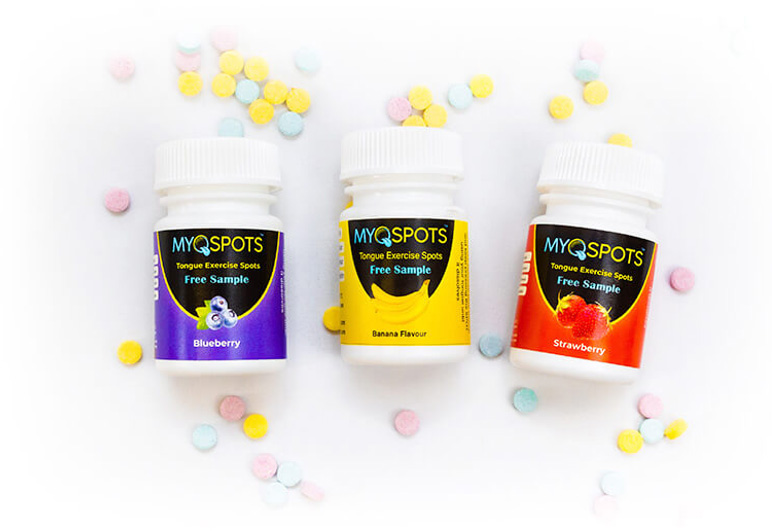On 1 July 2023, AHPRA’s new Guidelines for registered medical practitioners who perform cosmetic surgery and procedures and its related Guidelines for registered medical practitioners who advertise cosmetic surgery came into effect.
These have significant implications for how cosmetic procedures are promoted. If you work in this sector, it’s vital that you understand the new rules and follow them closely. Here, we’ll focus on the new advertising guidelines but we recommend reading both.
Why have the rules changed?
Because doctors and patients called for action to control ‘cosmetic cowboys’. A joint investigation by Four Corners, The Age and The Sydney Morning Herald exposed appalling practices in the sector that preyed on patients’ desire for the perfect body but often left them with botched procedures that required revision surgery. Indeed, revision surgery may be needed by around 10-20% of women after cosmetic surgery on their breasts according to some reputable plastic surgeons.
Prompted by those media reports, AHPRA launched an independent external review, including a public consultation, which reported in September 2022. The review found that,
“…when it comes to cosmetic surgery, universal minimum standards for education, training and qualifications are non-existent in Australia. It is therefore possible for any medical practitioner to offer and perform invasive cosmetic surgical procedures without having undertaken appropriate training or having amassed sufficient supervised experience to reach an acceptable level of competency.”
As The Sydney Morning Herald puts it, “Under current law, anyone with a basic medical degree can call themselves a cosmetic surgeon, even though they aren’t registered specialist surgeons with more than a decade of postgraduate surgical training.”
Regarding advertising,
“The review found that, owing to the unique nature of the cosmetic surgery sector (including that it lacks the protective measures found in other parts of the health system that inform consumers and direct them to qualified practitioners), advertising poses risks not present in other areas of medical practice and needs to be well regulated.”
Those risks included:
- A lack of clarity about the training and qualifications of practitioners
- The entirely elective nature of cosmetic surgery – advertising plays a key role in creating a demand for services (unlike other health services which are sought for recognised health needs)
- The extensive use of social media to influence consumer choice – and the disturbing link between social media use and body dysmorphia or other body image concerns, particularly among young women.
The review noted particular concerns about social media tactics such as:
- Using images of models who are unlikely to have had any cosmetic surgery
- Actively encouraging people to pursue ‘the perfect body’
- The use of influencers to promote procedures.
Clearly, more safeguards were needed. AHPRA delivered these in its recently launched guidelines.
What do the guidelines cover?
The advertising guidelines apply only to practitioners who perform cosmetic surgery. That’s defined as “…operations and other procedures that revise or change the appearance, colour, texture, structure or position of normal bodily features with the dominant purpose of achieving what the patient perceives to be a more desirable appearance.”
Cosmetic surgery involves cutting beneath the skin and includes:
- Breast augmentation
- Abdominoplasty
- Rhinoplasty
- Blepharoplasty
- Surgical facelifts
- Cosmetic genital surgery
- Liposuction and fat transfer.
The advertising guidelines do not apply to non-surgical cosmetic procedures, such as Botox, fillers, dermabrasion or fat freezing. However, the related new Guidelines for registered medical practitioners who perform cosmetic surgery and procedures states that, “Advertising should not glamorise cosmetic procedures, minimise the complexity of a procedure, overstate results or imply patients can achieve outcomes that are not realistic.” More detailed guidance on non-surgical cosmetic procedures may be developed in due course.
The guidelines exclude:
- Medically justified surgeries and procedures, which may improve appearance but are done to restore, correct or improve the shape of body structures for functional or psychological reasons
- Reconstructive surgery that is done to restore form and function as well as normal appearance
- Gender affirmation surgery.
What do the new advertising rules require?
The new advertising rules hold you to a much higher standard designed to support well-informed patient decisions based on realistic expectations.
Advertising is defined broadly as anything that promotes cosmetic surgery, including social media. Inaccurate advertising can:
- Mislead the public
- Create unrealistic expectations
- Lead patients to seek out unnecessary or inappropriate surgeries (e.g. upselling)
- Downplay the seriousness of surgery, its risks or the recovery time and experience
- Lead to poor healthcare decisions.
In contrast, good practice in advertising cosmetic surgery and procedures:
- Gives balanced and accurate information so that the overall impression created by the advertising is not misleading
- Describes and/or shows realistic results
- Presents the risks and recovery process of cosmetic surgery accurately
- Makes clear that outcomes will depend on the characteristics of the individual seeking surgery
- Presents normal body variation positively without pathologising normal appearance or encouraging surgery to ‘fix’ normal variations.
We encourage you to read the advertising guidelines carefully. Here, we outline some (but by no means all) of the new requirements.
Describing yourself
If you provide cosmetic surgery or procedures, when describing yourself you must:
- State your registration number
- Make clear whether you hold general registration or specialist registration, including recognised specialty and field of specialty practice (if applicable)
- Not use acronyms (e.g. when listing professional memberships) as this can confuse patients
- Make accurate claims about the extent of your experience and training (listing surgical rotations completed during pre-vocational training can mislead patients into thinking you have more surgical experience than you really do)
- Avoid poetic or exaggerated descriptions of your skills (including in hashtags), such as ‘sculptor’, ‘magic hands’ or ‘world renowned’.
Using social media influencers
AHPRA is rightly concerned about social media’s influence on young people at risk of body dysmorphia. If you choose to use a social media influencer, you are responsible for any content they deliver and must ensure it complies with the National Law. Be very careful here.
Choosing imagery – including ‘before and after’ galleries
Cosmetic procedures are done to enhance appearance. Visuals are therefore a key form of advertising.
You must not:
- Use a single image likely to give the impression it represents the outcome of surgery, e.g.
- Naked bodies
- Stylised images – mood lighting, soft filters, black and white images
- Images of models or celebrities
- Use images of anyone under 18
- Trivialise cosmetic surgery by linking it to entertainment, e.g. imagery including music, dancing, singing or comedy
- Idealise cosmetic surgery, e.g. through lifestyle shots taken at the beach or poolside
- Sexualise cosmetic surgery by the setting or positioning (detailed guidance is provided on this)
- Capture, or purport to capture, the emotional reactions of patients, such as patients giving ‘thumbs up’ or crying with happiness after cosmetic surgery
- Use captions that idealise cosmetic surgery or minimise its risk, e.g. descriptions cuh as ‘more natural’, ‘hotter’ or ‘younger’
- Encourage interaction with images in a competitive way, such as promotional material that asks for votes on patients’ surgical outcomes or features such as ‘guess the size of the implant’.
‘Before and after’ galleries showcase your work but must also respect patients’ privacy. You must have fully informed consent to use their image in any advertising, including where the image will be used, how long for, and that images on social media platforms may be shared and commented on. Patients must be given the chance to view their images before consenting to their use.
Your ‘before and after’ gallery must:
- Include a prominent warning that the outcomes shown are only relevant for this patient and do not necessarily reflect the results other patients may experience, as results may vary due to many factors including the individual’s genetics, diet and exercise
- Only use genuine images of your actual patients
- Ensure that the most prominent or first-seen image is of the before photo or a composite of the before and after photos
- Ensure the before and after photos are as similar as possible in regard to content, lighting, camera angle, background, framing and exposure, posture, clothing and make-up.
- Not use images that are edited or enhanced, for example through the use of filters, retouching, grey-scaling and similar techniques (this may minimise scarring and bruising).
We recommend you review all the images on your website and social media posts to ensure they comply with these new requirements.
Being real about the reality of cosmetic surgery
Your advertising must provide accurate, realistic, educative and easily found information about the risks or potential risks of cosmetic surgery. If there’s not space to provide full information about risks (e.g. on a social media post), you must provide a link to that information.
You must make clear that: cosmetic surgery:
- Is a serious decision (don’t award it as a competition prize)
- Requires recovery time and processes such as massages or compression garments, absence from employment or temporary restrictions on activity
Choose your words carefully to avoid misleading patients regarding surgery’s complexity, duration, expected pain, potential side effects or potential complications. Do not:
- Downplay surgery by describing it as ‘gentle’ or ‘simple’
- Minimise what’s involved in recovery by describing it as ‘quick’ or ‘rapid’
- Trivialise the invasive nature of surgery by describing it as ‘artistry’, ‘silhouette’ or ‘sculpting’
- Use colloquial terms or non-clinical terms (‘boob job’, ‘tummy tuck’, ‘Brazilian butt lift’) without also using the medical term for the surgery, including via a hashtag
- Idealise cosmetic surgery through terms such as ‘designer vagina’, ‘barbie’, ‘transformation’, ‘amazing’, ‘perfect’
- Use statements or marketing techniques that imply any desired outcomes can be obtained – ‘get her look’, ‘bod inspo’, ‘bikini body’, or ‘get your desired shape’
- Make unsupported advertising that claims cosmetic surgery will change the patient’s life, boost confidence, improve body image or self-esteem.
Protecting vulnerable people
You must recognise that children, young people and some other groups are particularly vulnerable to body image pressures and ensure your advertising does not exacerbate this.
Cosmetic surgery advertising must:
- Not be targeted or directed at under-18s
- Limit the exposure of under-18s (e.g. do not advertise in publications or other media with a significant audience of under-18s)
- Be identified as ‘adult content’ on social media platforms to prevent under-18s accessing it
- Not exploit or be targeted towards at-risk groups (including not leveraging social media algorithms and similar to boost social media posts towards vulnerable groups)
- Not use terminology in meta data, hashtags, or other fields within advertising in order to target a vulnerable patient demographic.
Practitioners must recognise that excessive posting (for example, daily or multiple times a day) may contribute to body image dissatisfaction by creating the perception that it is normal to have cosmetic surgery.
What should reputable clinics do now?
As the new advertising guidelines note,
“Cosmetic surgery is invasive with potential complications, is often irreversible and is often sought by potentially vulnerable people. It can also be a lucrative area of practice and financial gain can compete with and sometimes outweigh patient wellbeing and safety considerations.”
Reputable clinics should therefore do everything to emphasise patient care at every stage of the process, including through your advertising.
We recommend that you set aside time to review your website and social media accounts to ensure they comply with the new advertising regulations.
Download the new advertising requirements
Pay particular attention to the images you use, including any before and after shots, and the way you describe yourself and your services.
You may also consider placing a gatekeeping message on your website asking viewers if they’re over 18.
If you would like help with this, please contact Splice Marketing. We’re experts at agile, inspiring healthcare marketing that complies with AHPRA regulations.







